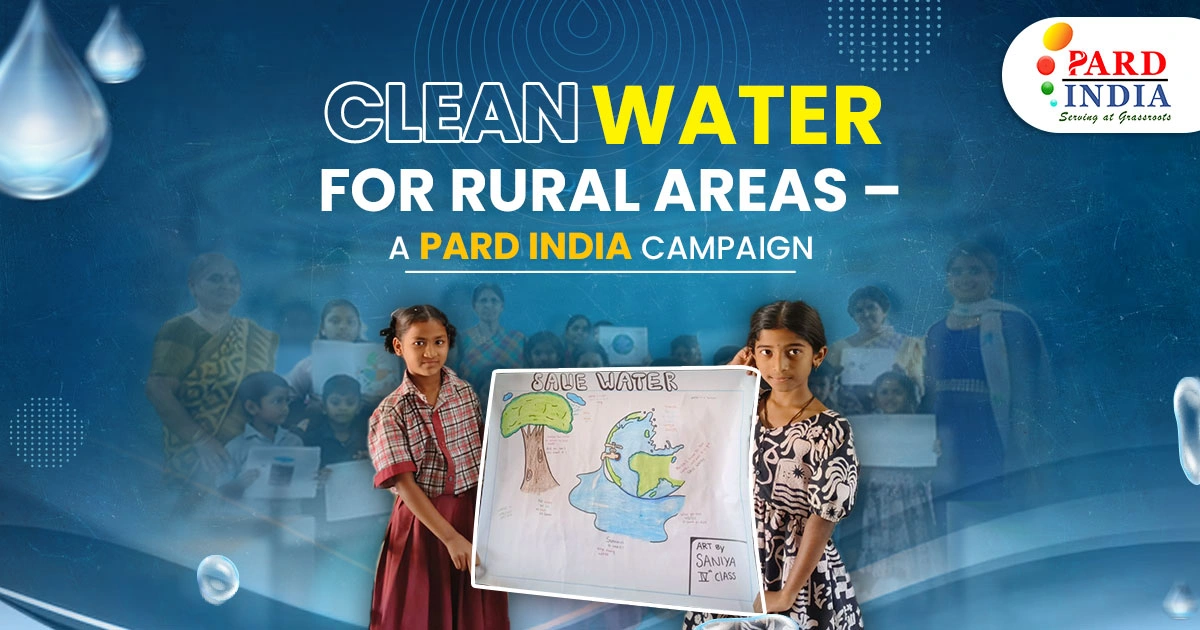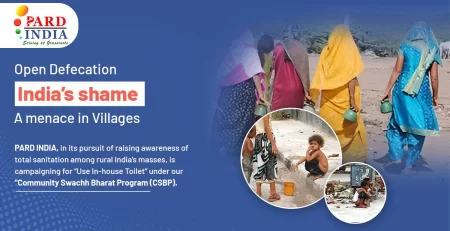The Struggle and Solution for Clean Water
The true value of clear water is only understood by those who struggle for it every day. Clean water is a necessity for the human body and is needed for body functions. The water that we drink regulates body temperature, transports nutrients, and removes waste from the body. Therefore, drinking contaminated or unsafe water negatively affects these body functions. Also, unclean water exposes your body to harmful bacteria, viruses, and chemicals, leading to severe, life-threatening diseases.
While the urban population can access private water, many rural communities lack such facilities. The rural side of India struggles for clean water due to a lack of infrastructure, population, and natural disasters. Consequently, we observe malnutrition and lower life expectancy among the rural communities.
The Government may have the power, but it lacks the resources to connect with communities at the grassroots level. That is precisely why it needs the support of a Non-Profit Organization like PARD INDIA to reach the masses and bridge the gap between the rural population and the government.
Impact of Water Crisis
Here are some of the alarming statistical data about the absence of clean water in India and on a global level:
- In 2022, more than 1.5 billion people were using water sources polluted by waste. As a result, it leads to severely dangerous diseases, including diarrhea, cholera, hepatitis A, typhoid, polio, and dysentery.
- The entire India is facing a dangerous decline in the groundwater level, which is a prominent water source in rural areas. According to the data, the water level in nearly 50% of the wells has declined. The alarming part is that the decline is not in some particular part of the country but in 63% or two-thirds of the Indian districts.
- There has been a visible partial decrease in the number of deaths in India due to unsafe water. According to the latest data, there were 35.2 deaths per 100,000 people because of drinking unsafe or contaminated water. The number of deaths is three times higher than the global average, as globally, 10 per 100,000 people lose their precious lives due to this water crisis.
- Diarrhoea is a leading killer of children, accounting for approximately 9 per cent of all deaths among children under age 5 worldwide in 2021. This translates to over 1,200 young children dying each day, or about 444,000 children a year, despite the availability of a simple treatment solution. Diarrhea is the third most common cause of death in children under five, responsible for 13% of deaths in this age group, killing an estimated 300,000 children in India each year.
- Women in villages who have to walk miles daily to fetch water are bearing the brunt of India’s worst water crisis in history, with warnings of severe impacts on their health and well-being. About 200,000 Indians die every year due to inadequate access to safe water, and 600 million face high to extreme water stress, the government think tank Niti Aayog reports.
All these statistics reflect our current situation regarding clean water. However, there is positive news, too, such as the decline in the number of deaths, increased awareness, and government schemes for rural India. PARD INDIA, a grassroots NGO for rural health, also runs campaigns to raise the voice of rural communities to protect people, especially children, from the severe dangers of unclean water.
Read more about PARD INDIA’s Community Swachh Bharat Program by clicking here
Role of Government and Growing Demand for Clean Water in Villages
The growing demand for clean water in villages among rural communities is a significant concern for the Indian government. The decline in groundwater, droughts, and global warming have already limited clean and potable water sources. So now, the Government needs to fulfill the requirement with limited resources.
Jal Jeevan Mission is the primary scheme launched in 2019. It was envisioned to provide tap water connections to every rural household in India. According to the latest data from the official government website, the tap water connection has reached 80% of the rural households.
While the data shows significant growth and improvement, many sections need improvement. We need to focus more on increasing awareness regarding the harms of unclean water. Not being aware of the polluted water also contributes to the water crisis. Additionally, the schemes are not reaching the rural communities due to the lack of communication and connectivity at the grassroots level.
Bridging this gap between rural communities and the government is a priority of PARD INDIA. At the same time, raising awareness among the rural masses is equally important to fight against unclean and contaminated water.
Every Indian citizen has the responsibility to treat water as a precious resource for a sustainable future. Those with a sufficient clean water supply should play their role in saving water and ensuring that not a single drop gets wasted. Everyone has a role to play in the fight for clean, drinkable water, especially the Grassroots NGOs in India. They are a key factor in establishing better communication channels between the Government and rural communities.
Join Hands in Our Clean Water Campaign
PARD INDIA is dedicated to the cause of providing clean water to as many families as possible. But we need more people, donors, volunteers, and social organizations for this cause. The strength is in numbers, which helps us reach rural communities. We invite all those who want to see an India where mothers do not experience the grief of losing their children because of contaminated water. Our commitment to clean water is for those women who walk kilometers in the scorching sun to get drinking water. Join our campaign for clean water in the rural areas that focuses on the following initiatives and awareness events:
- Achieve universal and equitable access to safe and free drinking water for all communities in villages.
- Clean water must be provided in all schools in the village for drinking, cooking, toilets, etc., and gardens must be connected with service water, with an adequate pumping system and a good drain network, to keep the premises hygienic and conducive to learning.
- Create awareness among children and communities about washing hands to improve hygiene and health conditions and prevent the likelihood of diarrhea and other diseases.
- Treatment of wastewater from industries to ensure the drinking water of hundreds of millions of people is not contaminated or chemically polluted.
- To promote economically viable Wastewater Treatment Plants in rural areas to recover water, nutrients, or energy, and to keep the villages’ hygiene from waste and harmful water spillage on roads and living places.
- Create awareness on climate change, rainwater harvesting techniques (donating water to the earth), and soak pits to manage water resources.
- Connect villages with global efforts such as the WHO, UNESCO, etc., to prevent transmission of waterborne diseases by creating adequate Clean Water facilities.
- All panchayat offices in villages should have the Guidelines for Drinking-Water Quality to promote the protection of public health. Village administration should conduct periodic water quality checks and audits, recording the data to ensure safe water and maintain water plant facilities.
- Promote a Drip Irrigation System, which provides an exact amount of water directly to the plant’s root to save water.
- Protect and restore water-related ecosystems, including mountains, forests, wetlands, rivers, lakes, and ponds.
- The government should have proper audits and checks to maintain the quality of water produced from Mineral Water Plants in villages, safeguarding the health of the people.
- Ensure the participation of local communities in improving water and sanitation management.
Please write to us for more details – info@pardindia.org
Sponsor a WASH Project in a school or village neighborhood.



Leave a Reply